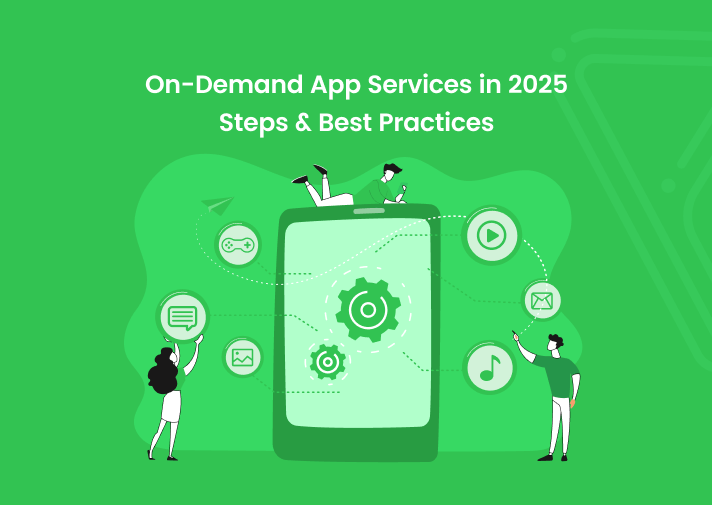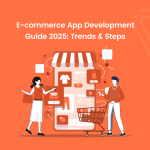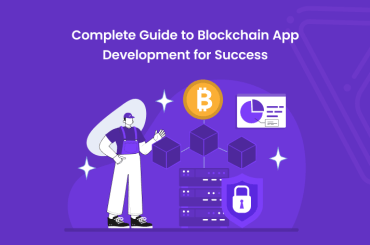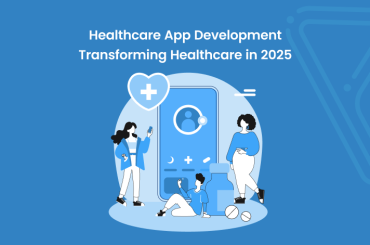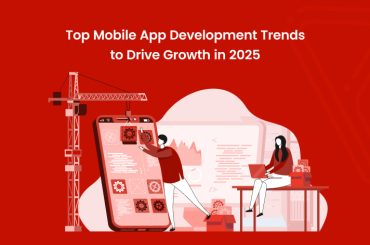Think about how often you rely on on-demand app services. People want fast and easy solutions, whether it’s booking a ride, ordering food, or accessing essential services instantly. These apps make daily tasks more convenient and efficient.
On-demand app services also help businesses grow by meeting healthcare, fitness, and entertainment customer needs. Partnering with a Mobile App Development Company in Chennai ensures customized solutions that enhance reach and scalability.
What is an on-demand service app?
An on-demand service app lets people get a service when they need it. Apps like Uber help you get a ride, and Instacart delivers groceries fast.
These apps are easy to use and save time. Smartphones and fast internet have made them very popular, making services quick and simple to access anytime.
How an on-demand business model works
On-demand apps help users get services quickly, like rides or food delivery.
Benefits for Businesses
- Customers get fast service and are happy.
- Businesses can reach more people easily.
- The app makes things quick and easy for users.
How Users and Service Providers Work Together
- Users can ask for services anytime using the app.
- Service providers can find customers quickly.
How Real-time Data Helps
- Businesses can see what customers need.
- Real-time data helps improve services.
- This makes services faster and better for users.
Results
- Businesses keep customers happy by offering quick services.
- The app makes everything easy for both customers and providers.
Types of on-demand service apps
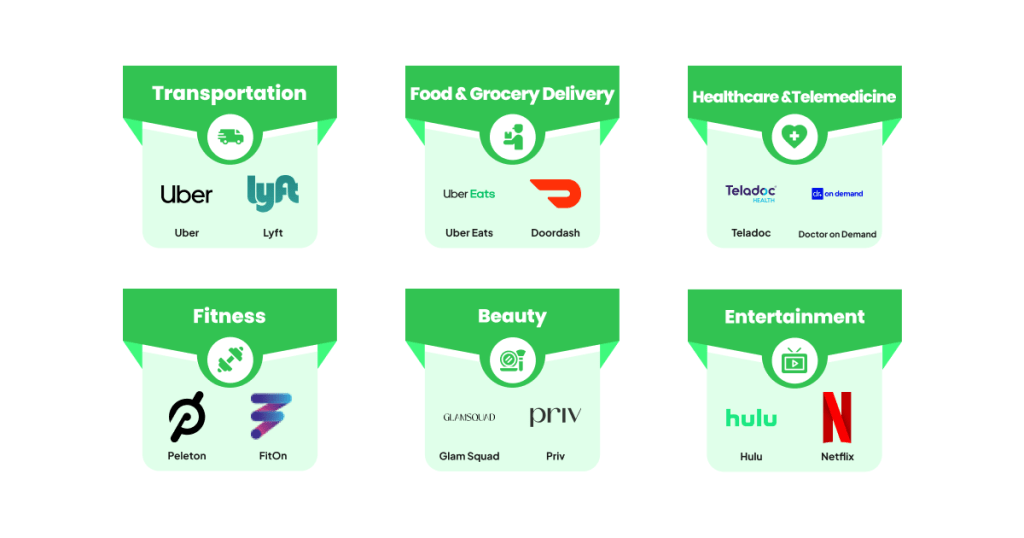
Transportation: Logistics & Taxi-Hailing
- Apps like Uber and Lyft let users quickly book rides.
- They make it easy to get a ride when needed, changing how people travel.
- These services are fast and flexible, especially for city commutes.
Food & Grocery Delivery
- Apps like DoorDash, Uber Eats, and Instacart became very popular, especially during the pandemic.
- They deliver food and groceries to your home.
- This service grew quickly with both big companies and smaller platforms.
Healthcare & Telemedicine
- Platforms like Teladoc and Doctor on Demand help people see doctors online.
- You can talk to a doctor through video calls or chat.
- This makes healthcare easier for people in remote areas who can’t visit doctors in person.
Fitness
- On-demand fitness apps like Peloton and FitOn offer home workouts.
- These apps let you join fitness classes and get personal training from home.
- They are great for people who want to work out at home.
Beauty
- Apps like Glamsquad and Priv bring beauty services to your home.
- You can get haircuts, manicures, and other treatments without going to a salon.
- More people are choosing at-home beauty services for convenience.
Entertainment
- Streaming platforms like Netflix, Hulu, and Twitch let you watch movies and shows anytime.
- You can also watch live events on-demand.
- These apps give users the freedom to enjoy entertainment whenever they want.
Two Main On-demand Business Models to Consider
1. Single Vendor Model (Direct Model)
- In this model, a business directly provides its products or services to users.
- The business interacts directly with customers, which can help build strong relationships.
- An example is Uber, where the company’s drivers provide the rides directly.
2. Aggregator Model (Marketplace Model)
- This model connects many service providers to users through one platform.
- Users can choose from different providers, such as Airbnb or Uber Eats, which offer services from multiple businesses.
- The platform acts as a middleman between the service providers and customers.
7 Must-have On-demand App Features
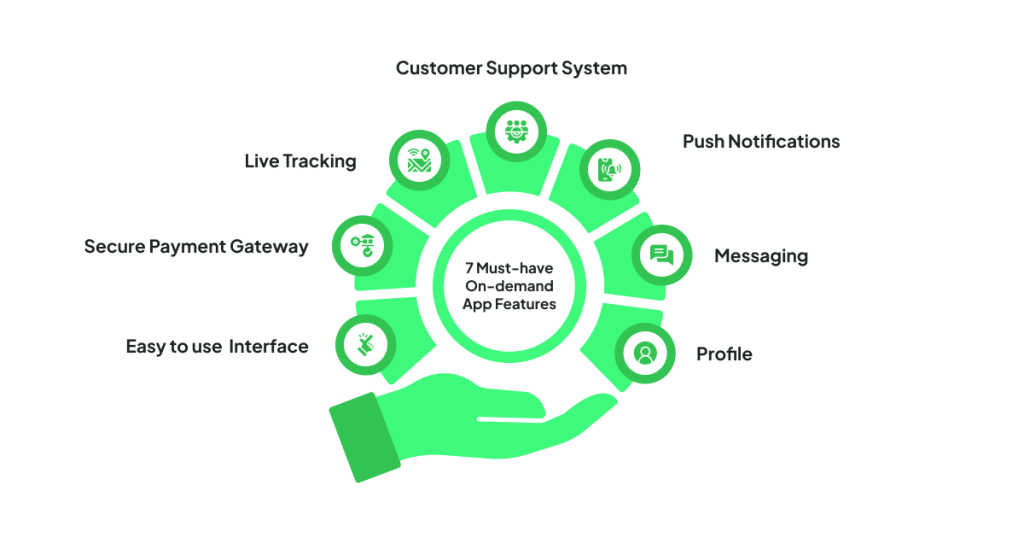
1. Easy-to-use Interface
- A simple design makes it easy for users to use the app.
- It keeps users happy and encourages them to return.
2. Secure Payment Gateway
- Safe payment methods build trust with users.
- Secure payments help more people complete transactions.
3. Live Tracking
- Users can see their service in real-time.
- This helps users feel confident and happy with the service.
4. Customer Support System
- Fast customer support helps solve problems quickly.
- It makes users feel taken care of, reducing frustration.
5. Push Notifications
- Notifications keep users updated about their orders or offers.
- It reminds users to return and use the app again.
6. Messaging
- Messaging lets users talk directly with service providers.
- This makes the experience more personal and helps solve problems faster.
7. Profiles
- Profiles let users save their preferences and past orders.
- It helps the app offer a more personalized experience.
Role of AI and ML in On-demand Apps
| AI (Artificial Intelligence) | ML (Machine Learning) |
|---|---|
| AI helps apps understand user behavior and personalize experiences. | ML enables apps to learn from data, predict trends, and optimize services. |
| AI uses data to offer tailored recommendations and services to users. | ML analyzes patterns in data to make predictions about user needs. |
| AI enhances customer interactions by automating responses and actions. | ML helps in forecasting demand, and ensuring services are available when needed. |
| AI improves overall user engagement by offering personalized content. | ML optimizes resource allocation and service delivery based on predictions. |
| AI supports real-time decision-making by analyzing user data instantly. | ML improves over time by continuously learning from new data and feedback. |
| AI helps businesses automate tasks, reducing operational costs and time. | ML provides deeper insights by identifying trends and anomalies in large datasets. |
Legal and Security Aspects of On-demand Apps
Data Privacy Laws
- On-demand app developers must follow laws like GDPR and CCPA.
- These laws protect user data and give users control over their personal information.
Building Trust with Secure Payment Systems
- Safe payment options make users feel secure.
- Trusted payment systems help stop fraud and protect data.
Importance of Legal Compliance
- Developers must follow legal rules to avoid fines.
- Following these rules helps build trust and keeps the business safe.
Security and Customer Loyalty
- Good security keeps user data safe.
- Strong security helps keep customers loyal and reduces risks.
Importance of Scalability in On-demand Apps
Need for Scalable Infrastructure
- On-demand apps need to handle more users during busy times.
- Scalable systems help the app grow and keep working well.
Tips for Scalable App Architecture
- Cloud-based solutions let the app grow or shrink as needed.
- Modular development helps update parts of the app without changing everything.
Ensuring Long-term Growth
- Scalable design helps the app grow with the business.
- It makes sure the app works well even during busy times.
Handling Traffic Spikes
- Scalable systems keep the app running smoothly during rush hours.
- It stops crashes and keeps the app fast and reliable.
Integrating Third-Party APIs in On-demand Apps
| Topic | Explanation | Example |
|---|---|---|
| Streamlining App Development | APIs offer ready-made features like payments, messaging, and geolocation. | Stripe (payments), Twilio (messaging), Google Maps (geolocation) |
| Popular Third-Party APIs | Stripe is used for Payments, Twilio is used for Messaging, Google Maps is used for Geolocation. | Stripe, Twilio, Google Maps |
| Benefits of Using APIs | APIs save time, cut costs, and improve performance. | Faster Development, Cost Reduction |
| Focusing on Core Functions | APIs let businesses focus on unique app features. | Focus on core services (e.g., custom features) |
Marketing Strategies for On-demand Service Apps
Building Pre-launch Hype
- Create excitement before the app launches.
- Use sneak peeks, countdowns, and early access to grab attention.
Leveraging Social Media
- Social media reaches a large audience.
- Post regularly, use ads, and engage with users to keep interest high.
Partnering with Influencers
- Influencers can share your app with a bigger audience.
- They can show how the app works and its benefits to their followers.
Offering Customer Loyalty Programs
- Reward users for being loyal.
- Give discounts, perks, or special offers to keep them using the app.
Accelerating User Acquisition and Brand Recognition
- These strategies help bring in new users and make your brand known.
- Good marketing makes your app stand out and builds a loyal user base.
Choosing Tech Stack for On-demand Apps
- Pick a tech stack that works for both the front end and back end.
- Use tools that make apps work well on Android App Development and iOS App Development. Flutter app development is good for making apps work on both.
Scalability and Performance Optimization
- Choose a tech stack that grows with your app as more people use it.
- Ensure the tech helps the app stay fast and smooth, even with more users.
Ensuring Stability and High Performance
- A good tech stack keeps the app stable as it grows.
- Flutter App Development can keep apps running well on different devices.
Saving Time and Money During Development
- Picking the right tech stack early in Android App Development saves time and money.
- Good tech choices make the app easier to improve later without spending too much.
6 Steps to Develop an On-demand Service App

1. Market Research and Idea Validation
Research what people need and check if your idea works by talking to users and competitors. This helps ensure your app solves a real problem.
2. Creating a Business Plan
Create a plan with clear goals and ways to make money. It helps guide the app’s growth and shows others why it’s worth supporting.
3. Defining App Features and User Personas
Decide what features your app will have. Create user profiles to understand what they need, like easy payments and live tracking.
4. Designing UI/UX
Make the app simple and easy to use. A good design helps users quickly find what they need and keeps them coming back.
5. App Development and Testing
Build the app and test it to fix problems. Make sure it works well on different devices for a smooth user experience.
6. Launching and Scaling
Launch the app and promote it. Monitor how it’s doing and improve it based on user feedback as more people use it.
Key Aspects of On-demand Service Apps: Benefits, and Challenges
Key Benefits
- Convenience: Users get services quickly, making life easier.
- Scalability: Apps can handle more users as they grow.
- Cost-Effectiveness: Businesses save money with better processes.
Challenges
- High Competition: It’s hard to stand out in a busy market.
- Regulatory Issues: Apps must follow rules to protect user data and payments.
How to Monetize On-demand Service Apps
Subscription Model
Charge users a monthly or yearly fee for premium features. This works well if users keep coming back regularly.
Ads Model
Show ads to make money while keeping the app free. This is great for apps with many users.
Commission Model
Take a small fee from every transaction between users and providers. Ideal for marketplace apps.
Choosing the Right Model
Pick the best fit based on your users and goals. A good strategy ensures steady income and growth.
Cost of Developing an On-demand App
| App Type | Cost Range | Details |
|---|---|---|
| Basic App | $20,000 – $40,000 | Apps with minimal features like static content or simple interfaces. |
| Intermediate App | $40,000 – $80,000 | Includes features like payment gateways, user profiles, and live tracking. |
| Advanced App | $80,000+ | Features AI, AR/VR, real-time tracking, or complex backend systems. |

Conclusion
Building successful on-demand app services requires smart planning and key features. Prioritizing user experience, security, AI, and third-party integrations ensures seamless performance. With rising demand, the right strategy leads to success.
Want to build your own on-demand app service? Pyramidion Solutions is here to help. Contact us today for expert advice and custom app development that fits your needs!

As the Director of Business Development, I have provided top-notch IT solutions for over a decade for software development, mobile application development, and blockchain development. My main work and passion lie in contributing to the business’s success through knowledge, creativity, hard work, and strong organizational skills.

